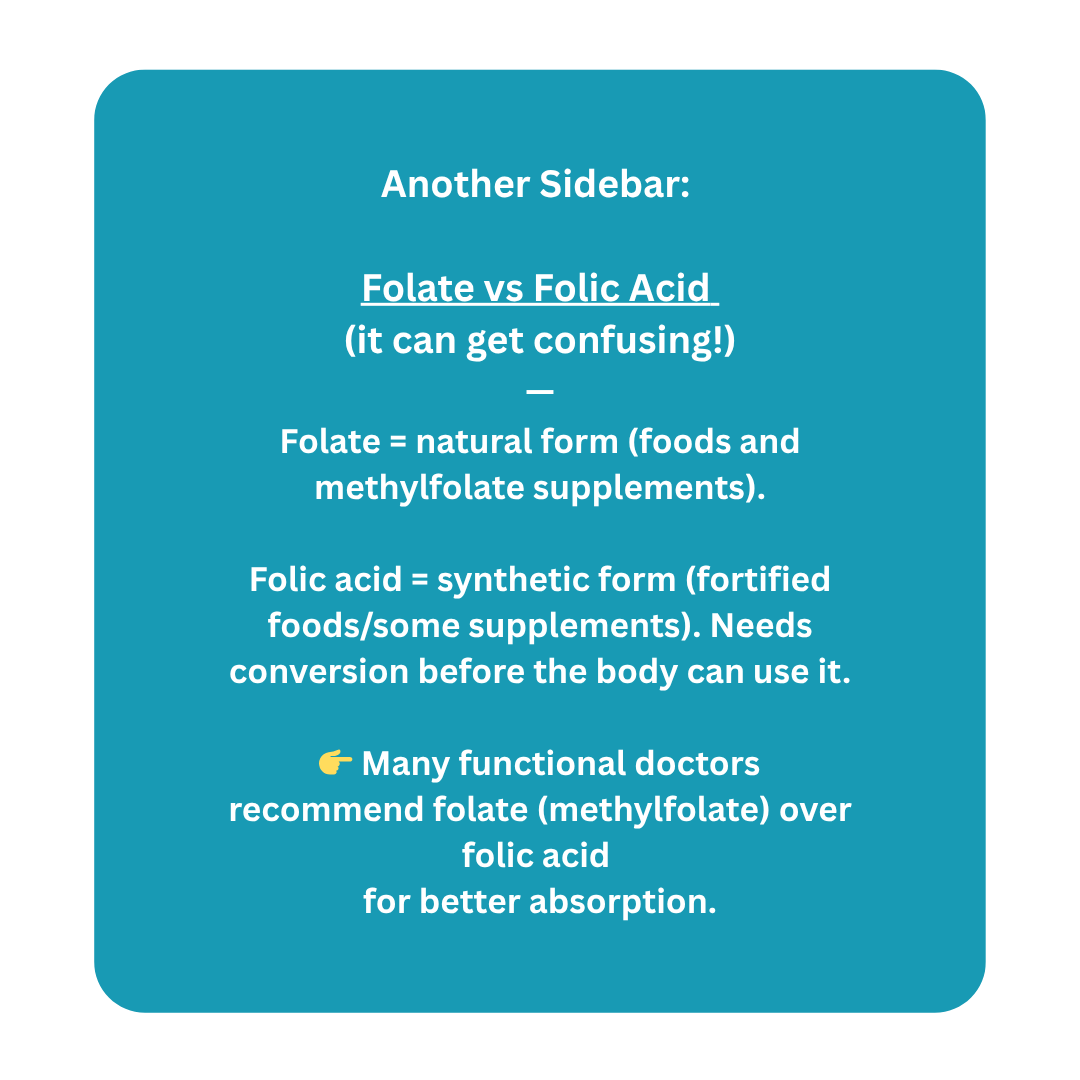Are your Labs Normal, Or Optimal?
Has this ever happened to you?
Your doctor’s office calls with the standard line: “Your labs look normal … maybe your cholesterol’s a bit high … but all OK."
And that’s it. No explanation. No context. No mention of important markers like vitamin D or magnesium (which, by the way, insurance often doesn’t even cover - kind of crazy).
But we're busy - so content with the normal labs, and we're off to the next thing.
There's just one problem …
Conventional labs are often black and white: you’re either fine or you’re not.
But the truth is, there’s a world of shades of gray in between—levels where you may not be sick, but you’re definitely not thriving.
👉 This is where functional medicine takes a different approach.
But first, let's sidebar, so I can make sure you understand the difference between conventional and functional lab ranges.
Now that you know why functional ranges matter — and how they differ from conventional ones — let’s look at what that actually means in practice.
Before we dive into each one, there’s one more important detail to understand: how the test itself is performed.
The same nutrient can be measured in different ways — most often as a serum test or an RBC test — and knowing the difference can help you interpret your results more accurately and have a more informed conversation with your doctor.
Serum tests → measure what’s in the fluid part of your blood at the moment. These can swing depending on what you ate or did recently.
RBC tests (red blood cell tests) → measure what’s inside your cells, showing your longer-term nutrient status (weeks to months).
As an example, for nutrients like magnesium and folate, functional doctors often prefer RBC tests over serum tests.
There are many labs your doctor might run … like cholesterol, glucose, thyroid, liver enzymes, and more. But these are nutrient-related labs that often get overlooked.
They can make a huge difference in your energy, brain health, metabolic function and long-term disease risk.
Below are some of the most commonly overlooked nutrient markers:
🌞 Vitamin D
Conventional Range: 30–100 ng/mL
Functional Range: 50–80 ng/mL (sweet spot ~60–80)
Why it matters: Supports immunity, mood, bone strength, and hormones. At 32 you’re “normal,” but far from optimal.
Common gap: Most people are deficient due to limited sun exposure and diet.
Test to request: 25-hydroxy vitamin D [25(OH)D]. The 1,25-dihydroxy D test doesn’t reflect long-term stores.
💧 Magnesium
Conventional Range: 4.2–6.8 mg/dL
Functional Range: 6.0–6.5 mg/dL
Why it matters: Crucial for sleep, stress, blood sugar, and muscle function.
Common gap: Soil depletion + processed diets leave most people deficient.
Test to request: RBC magnesium (serum can look “normal” even when you’re low).
🐟 Omega-3 Index
Conventional Range: >4%
Functional Range: 8–12%
Why it matters: Protects brain, heart, and helps resolve inflammation.
Common gap: Most eat little fatty fish and too many omega-6 oils (corn, soybean, safflower).
Here's another sidebar, to explain the difference between Omega-3 and Omega-6s … and why the balance of those two are so important.
⚡ Vitamin B12
Conventional: 200–1100 pg/mL
Functional: 500–900 pg/mL
Why it matters: Supports energy and nerve health. Low-normal can still mean fatigue and brain fog.
Common gap: Absorption decreases with age; harder on plant-based diets.
Test to request: Serum B12.
🌱 Folate
Conventional: 280–791 ng/mL
Functional: 600–1500 ng/mL
Why it matters: Supports DNA repair, brain health, and cell growth. Low levels tied to fatigue and cardiovascular risk.
Common gap: Low intake of leafy greens and beans, plus processed diets.
Test to request: RBC folate (serum can look fine after a single folate-rich meal).
🛡️ Zinc
Conventional: 56–134 mcg/dL
Functional: 90–120 mcg/dL
Why it matters: Supports immunity, repair, and hormones.
Common gap: Low seafood/meat diets + soil depletion.
Test to request: Serum zinc (also check copper balance).
❤️ Homocysteine
Conventional: <15 µmol/L
Functional: 6–9 µmol/L
Why it matters: High levels raise risk for heart and brain disease.
Common gap: Often due to low intake or absorption of B12, B6, or folate.
Test to request: Plasma homocysteine (not part of standard labs - ask for it specifically).
The Bottom Line
This isn’t about chasing perfection or taking every supplement.
It’s about being educated and in control:
Asking more specific questions about your labs
Requesting additional tests when you want a fuller picture
Understanding the difference between fine and optimal
When you know what to ask for, you’re no longer in the dark.
You’re a partner in your own care - and now you have the knowledge to be an active part of the conversation.
Reach out at any time with questions - would love to hear from you!
